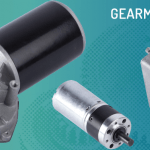Gearbox design involves a great quantity of requirements that we should keep an eye on. This analysis ensures its proper operation and directly influences the effectiveness and efficiency of the speed reducer. How does target performance affect gearbox design? Below we address each of these factors in-depth.
Performance requirements in gearbox design
When speaking of performance requirements, we are referring to the parameters used to characterise the specific operations of a gearbox. Here we could mention:
Speed and power
The range of speed and power at which the operation of the motor is satisfactory.
This may interest you: Power and torque: what are they and what is their difference?
Torque
When speaking of “Torque” we are referring to the rotational force a gear motor outputs, so we should ask ourselves, what is the required load torque?
Service life
Depending on the service life minimums we establish, we will have to choose one or another material. Furthermore, the treatments they undergo will be very different. Measuring the capability of the motor to operate for a certain amount of time in our application is key for preventing our gearbox from wearing out too fast.
Cost
On the other hand, another main aspect to consider in a gearbox design is the available budget. Many design, material and surface treatment options modify and condition the total cost of the product.
What performance do different gearbox materials offer?
Machined steel
It is a very common material that is used to produce gears, pinions and shafts. High precision gears may be produced by steel machining, offering great capabilities and low noise levels. Machined steel is treated in order to increase its load capacity and to reduce gear sizes.

Zamak
This is a Zinc, aluminium, magnesium and copper alloy. It is cheaper than steel, and also possesses mechanical properties that are superior to those of plastic. On the other hand, this material may be cast and undergo subsequent treatment to reinforce its properties.
Plastic
When compared to steel, plastic has only 10% of the load capacity. However, for certain applications, the use of gearboxes manufactured in cast plastic may offer significant savings when compared to steel.
Bronze
Bronze is commonly used in helical gears but is not a common material. It offers little versatility in relation to some performance requirements.
Powder metallurgy
Another, more novel option is powder metallurgy – an interesting way of working metal by powder compaction. This technique allows for the manufacturing of complex quality parts at a lower cost than machined steel.
Do not miss this interesting article: 5 tips prior to designing the gear motors
How do location and size influence the design?
The size and location of the application we intend to design are very important factors to be considered, based, for example, on characteristics such as operation temperature and space.
Operation temperature
Taking into account the operation temperature will result in less operation problems in the process. But, what should be check? It is advisable to check the temperature when the motor is operating under normal conditions, and cross-reference this data with the temperature it reaches when under extreme conditions that the machine could possibly be subjected to.
Operation environment
If the gear motor is to operate in humid environments, for example, we should take certain waterproofing measures. On the other hand, when operating in dirty environments, such as those seen in the livestock industry, we should carefully consider dust levels, since the accumulation of particles in certain parts of the gear motor may hinder its operation and contribute to a premature wear.
Space
Available space is a factor that is considered to be fundamental when designing a speed reducer gear box. Its importance lies in the need to conform to a specific area and offer a proper transmission without its performance being negatively affected.
In conclusion, the design of a gearbox should take into account and meet the requirements of each of these factors for the speed reducer to offer a proper operation. Following these tips will prevent premature failures and risks to persons and machines.
CLR: Technology and quality in gearbox design and manufacturing
CLR has the technology and expertise that is necessary for designing not only gearboxes, but also each of their components. Experienced across various industrial sectors, CLR offers its clients a large team of engineers who work with the goal of achieving excellence on each project, combining innovation and experience.
Are you working on the design of a speed reducer? Do you have doubts about how to approach this development? We invite you to download our eBook dealing with gear motor selection criteria. By reading this eBook you will learn to define the characteristics of the motion you wish to perform.











